Top Rankings
Lewiston-Porter Central School District ranks among the top 20% of public school district in New York for:
Category
Attribute
Science Proficiency
Highest science proficiency (Top 10%)
For the 2025 school year, there is 1 public preschool serving 390 students in Lewiston-Porter Central School District. This district's average pre testing ranking is 8/10, which is in the top 30% of public pre schools in New York.
Public Preschool in Lewiston-Porter Central School District have an average math proficiency score of 50% (versus the New York public pre school average of 38%), and reading proficiency score of 50% (versus the 41% statewide average).
Minority enrollment is 8% of the student body (majority Hispanic), which is less than the New York public preschool average of 62% (majority Hispanic).
Overview
This School District
This State (NY)
# Schools
4 Schools
1,575 Schools
# Students
1,859 Students
680,405 Students
# Teachers
170 Teachers
57,270 Teachers
Student : Teacher Ratio
11:1
11:1
District Rank
Lewiston-Porter Central School District, which is ranked #209 of all 1,015 school districts in New York (based off of combined math and reading proficiency testing data) for the 2021-2022 school year.
The school district's graduation rate of 90-94% has decreased from 92% over five school years.
Overall District Rank
#208 out of 1020 school districts
(Top 30%)
(Top 30%)
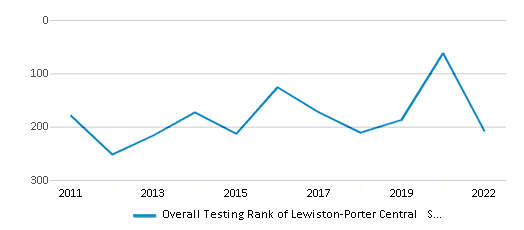
Math Test Scores (% Proficient)
59%
46%
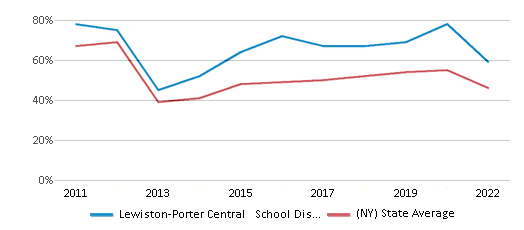
Reading/Language Arts Test Scores (% Proficient)
59%
49%
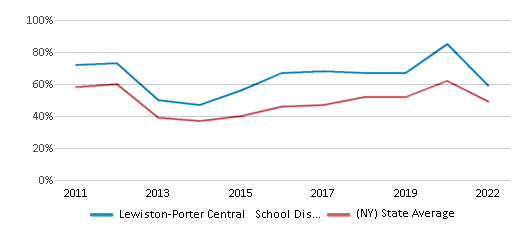
Science Test Scores (% Proficient)
93%
78%

Graduation Rate
90-94%
87%
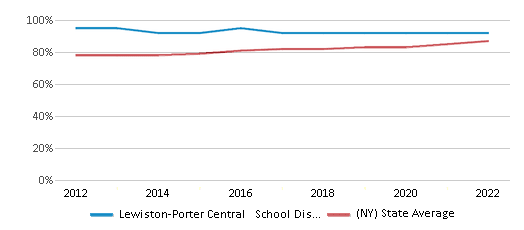
Students by Ethnicity:
Diversity Score
0.18
0.73
# American Indian Students
10 Students
6,882 Students
% American Indian Students
1%
1%
# Asian Students
27 Students
74,011 Students
% Asian Students
1%
11%
# Hispanic Students
55 Students
208,386 Students
% Hispanic Students
3%
31%
# Black Students
9 Students
108,146 Students
% Black Students
1%
16%
# White Students
1,680 Students
257,567 Students
% White Students
90%
38%
# Hawaiian Students
n/a
1,683 Students
% Hawaiian Students
n/a
n/a
# Two or more races Students
77 Students
23,663 Students
% of Two or more races Students
4%
3%
Students by Grade:
# Students in PK Grade:
-
62,211
# Students in K Grade:
118
99,006
# Students in 1st Grade:
123
97,399
# Students in 2nd Grade:
147
96,389
# Students in 3rd Grade:
131
87,433
# Students in 4th Grade:
119
87,229
# Students in 5th Grade:
124
81,167
# Students in 6th Grade:
148
24,209
# Students in 7th Grade:
144
13,778
# Students in 8th Grade:
152
14,339
# Students in 9th Grade:
173
2,893
# Students in 10th Grade:
157
2,861
# Students in 11th Grade:
147
2,527
# Students in 12th Grade:
150
2,549
# Ungraded Students:
26
6,415
District Revenue and Spending
The revenue/student of $26,590 in this school district is less than the state median of $31,307. The school district revenue/student has stayed relatively flat over four school years.
The school district's spending/student of $24,353 is less than the state median of $32,183. The school district spending/student has stayed relatively flat over four school years.
Total Revenue
$49 MM
$78,541 MM
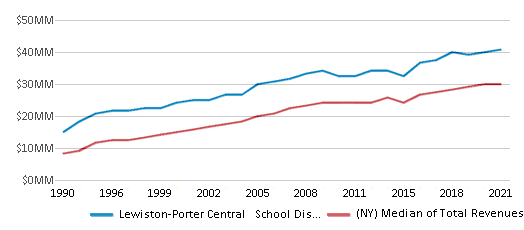
Spending
$45 MM
$80,737 MM
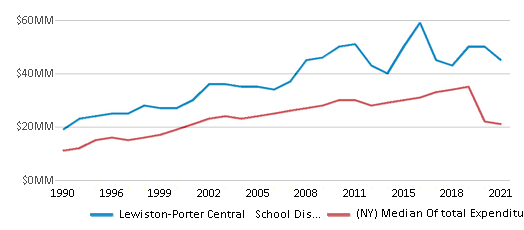
Revenue / Student
$26,590
$31,307
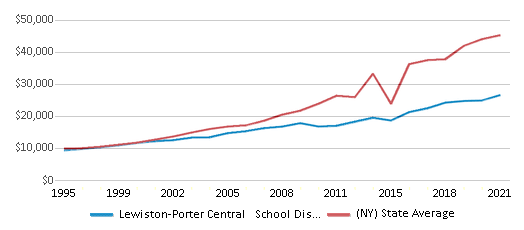
Spending / Student
$24,353
$32,183
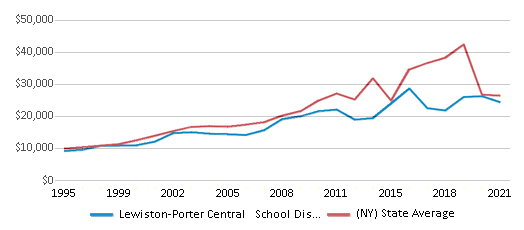
Best Lewiston-Porter Central School District Public Preschools (2025)
School
(Math and Reading Proficiency)
(Math and Reading Proficiency)
Location
Grades
Students
Rank: #11.
Primary Education Center
(Math: ≥50% | Reading: ≥50%)
Rank:
Rank:
6/
Top 50%10
4061 Creek Rd
Youngstown, NY 14174
(716) 286-7220
Youngstown, NY 14174
(716) 286-7220
Grades: PK-3
| 390 students
Recent Articles

What Is A Charter School?
Explore the world of charter schools in this comprehensive guide. Learn about their history, how they operate, and the pros and cons of this educational innovation. Discover key facts about charter schools, including admission policies, demographics, and funding, as well as what to look for when considering a charter school for your child.

10 Reasons Why High School Sports Benefit Students
Discover the 10 compelling reasons why high school sports are beneficial for students. This comprehensive article explores how athletics enhance academic performance, foster personal growth, and develop crucial life skills. From improved fitness and time management to leadership development and community representation, learn why participating in high school sports can be a game-changer for students' overall success and well-being.

February 05, 2025
Understanding the U.S. Department of Education: Structure, Impact, and EvolutionWe explore how the Department of Education shapes American education, from its cabinet-level leadership to its impact on millions of students, written for general audiences seeking clarity on this vital institution.





